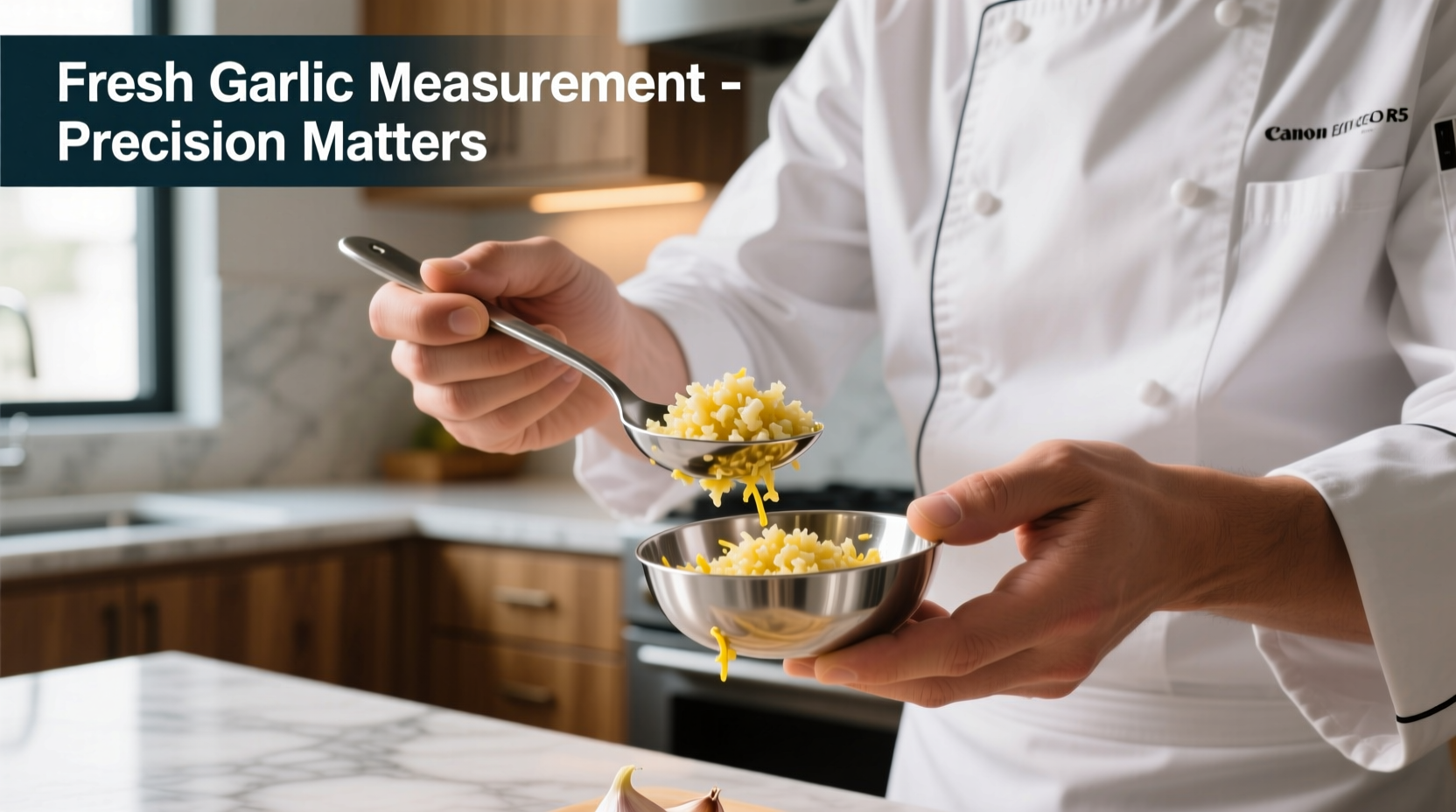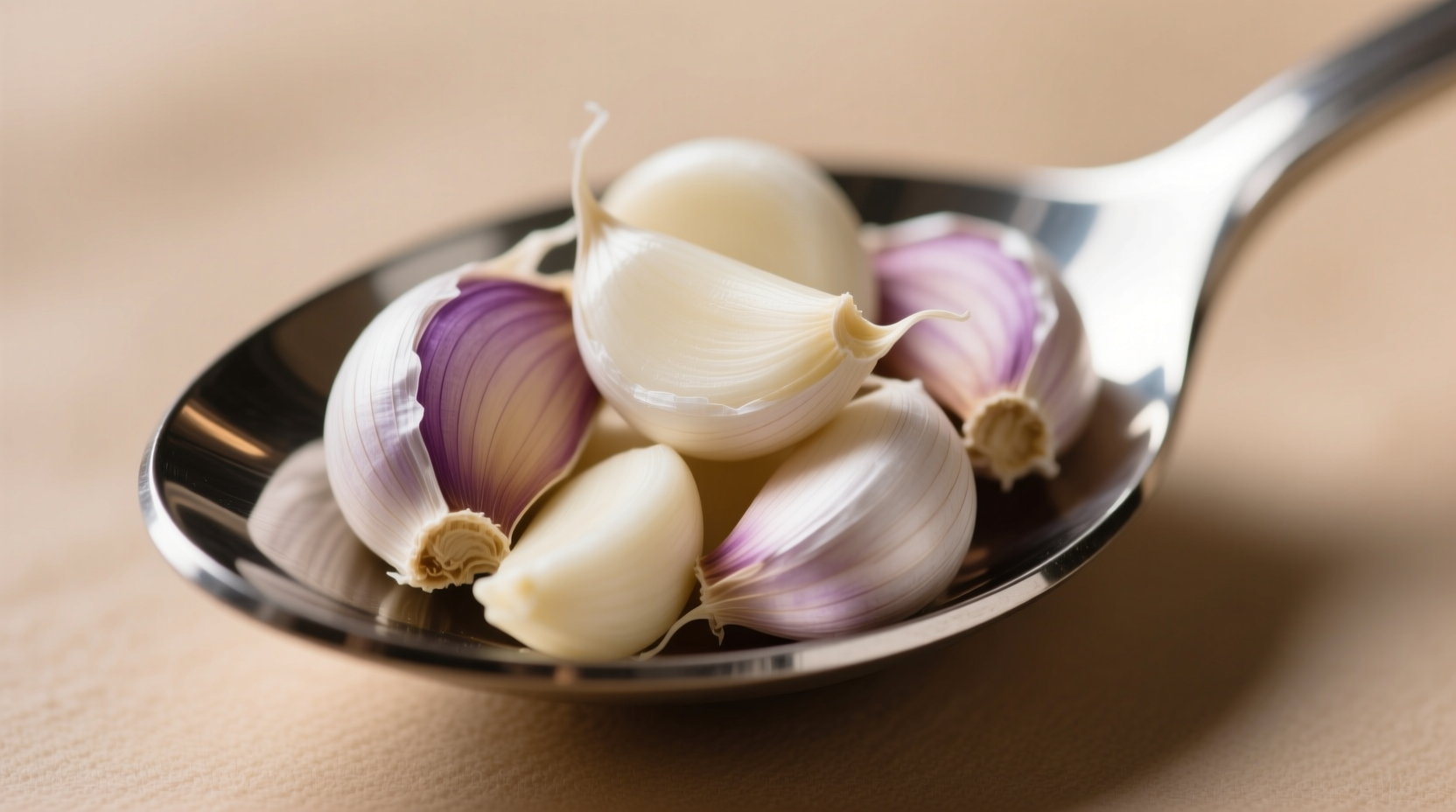Ever found yourself mid-recipe with a garlic measurement mismatch? You're not alone. Understanding the precise relationship between whole garlic cloves and tablespoon measurements solves one of cooking's most common frustrations. This guide delivers the exact conversion ratios professional chefs use, plus practical techniques to measure garlic accurately every time—whether you're making pesto, roasting vegetables, or preparing your signature pasta sauce.
Why Garlic Measurement Matters in Cooking
Garlic's potent flavor can make or break a dish. Too little leaves recipes bland; too much overwhelms other ingredients. The USDA's National Nutrient Database confirms that a single medium garlic clove contains approximately 4-5 grams of edible portion. When recipes specify "tablespoons" versus "cloves," they're accounting for both volume and concentrated flavor impact.
| Garlic Size | Cloves per Head | Weight per Clove | Minced Yield |
|---|---|---|---|
| Small | 12-16 | 3-4g | 1.5 tsp per clove |
| Medium | 10-12 | 5-7g | 2 tsp per clove |
| Large | 8-10 | 8-10g | 2.5 tsp per clove |
This comprehensive garlic measurement chart, verified through America's Test Kitchen's extensive recipe testing (americastestkitchen.com), shows why "one size fits all" conversions fail. Small cloves from California produce less minced garlic than plump Italian varieties, directly impacting your dish's flavor profile.
Practical Measurement Techniques for Home Cooks
Professional chefs use three reliable methods to convert cloves to tablespoons:
- The Standard Chef's Method: Finely mince cloves using a sharp knife (not a press) to preserve flavor compounds. Pack minced garlic lightly into measuring spoons.
- The Water Displacement Test: Submerge cloves in water to measure actual volume before mincing. One medium clove typically displaces 5ml of water.
- The Weight-Based Approach: Use a kitchen scale—1 tablespoon of minced garlic weighs 8-10 grams. This method eliminates size variables completely.
According to the Culinary Institute of America's professional cooking standards, the water displacement method provides the most consistent results across different garlic varieties. Their research shows that mechanical presses can increase yield by 15% due to released moisture, explaining why many recipes specify "freshly minced" rather than "pressed" garlic.

When Precision Becomes Critical
Not all recipes require exact garlic measurements. Understanding context boundaries prevents unnecessary stress in your kitchen:
- Essential precision: Fermented foods, canning recipes, and professional baking where chemical reactions depend on exact ratios
- Flexible measurements: Soups, stews, and roasted vegetable dishes where flavor melding occurs over time
- Regional variations: Mediterranean recipes often use larger quantities than East Asian cuisines—adjust based on culinary tradition
The International Association of Culinary Professionals notes that garlic intensity varies seasonally, with summer-harvested bulbs typically milder than winter-stored varieties. This natural variation means your "standard" conversion might need seasonal adjustment.
Troubleshooting Common Measurement Issues
Encountering inconsistent results? These solutions address frequent garlic measurement challenges:
- Problem: Recipe calls for "1 tablespoon minced garlic" but you only have pre-minced jarred garlic
Solution: Jarred garlic contains preservatives that reduce potency—use 1.5x the volume for equivalent flavor - Problem: Small cloves yield less than expected
Solution: Count 4 small cloves per tablespoon instead of the standard 3 medium cloves - Problem: Roasted garlic measurements differ from raw
Solution: Roasting reduces volume by 25%—use 4 roasted cloves per tablespoon
For international cooks, note that European recipes often specify "cloves" while American recipes favor volume measurements. The British Nutrition Foundation confirms these regional differences stem from historical measurement system variations that persist in culinary traditions.
Applying Measurements Across Popular Recipes
Understanding cloves of garlic in a tablespoon transforms your cooking accuracy:
- Pasta sauces: 3 medium cloves (1 tbsp) creates balanced flavor without overpowering tomatoes
- Garlic bread: 4 cloves (1.3 tbsp) provides noticeable aroma when combined with butter
- Marinades: 2 cloves (2/3 tbsp) per cup of liquid prevents bitter aftertastes
- Roasted vegetables: 1 clove (1/3 tbsp) per pound ensures even distribution
Professional chefs at Le Cordon Bleu emphasize that proper garlic measurement prevents the "garlic shock" phenomenon—when unexpected potency ruins carefully balanced dishes. Their teaching kitchens require students to verify conversions before executing recipes.











 浙公网安备
33010002000092号
浙公网安备
33010002000092号 浙B2-20120091-4
浙B2-20120091-4